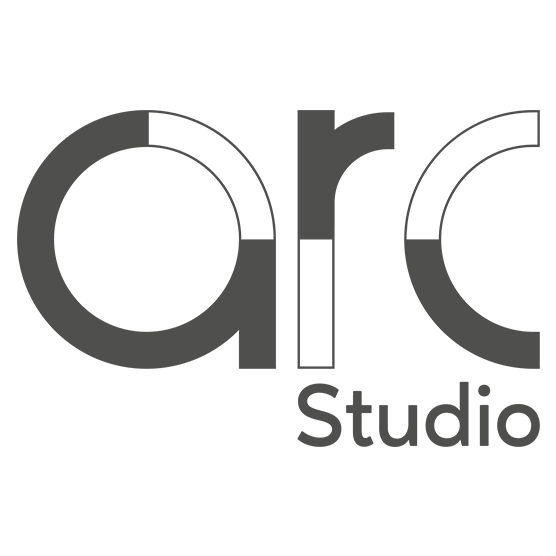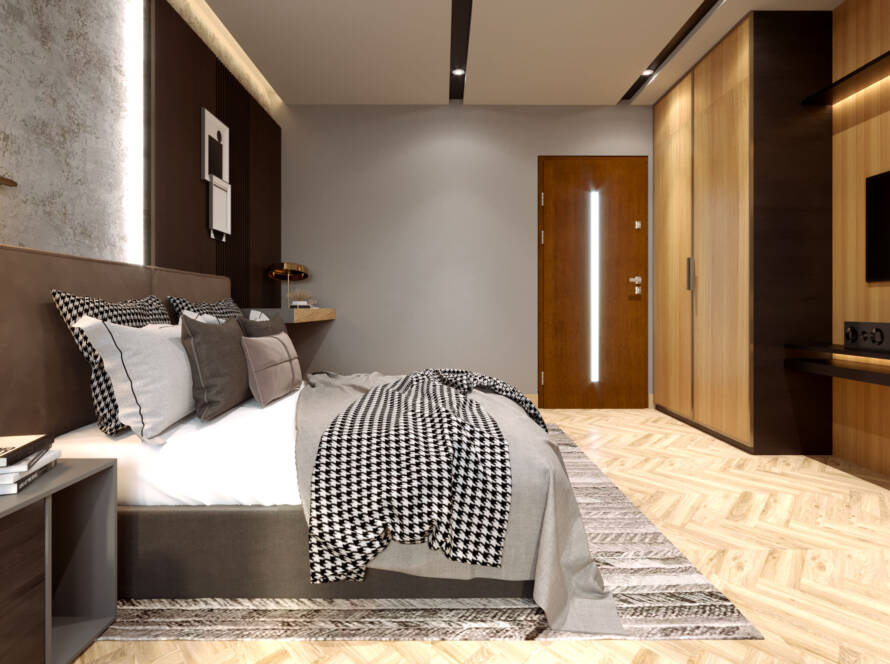We are a group of designers and artists here at Arc Studio, and our specialty is turning your ideas into graphics that evoke various emotions.
When it comes to strong collaborations, communication is the most important factor. You, as an interior designer, are aware of how essential it is to make use of the appropriate communication tools in order to guarantee that your clients comprehend the genuine value of the designs you create. During the presentation of your idea to your clients, you may choose to give a pictorial picture of your idea in the form of hand-drawn sketches or renderings in three dimensions of your idea.
When it comes to interior design, the discussion between 3D rendering vs traditional sketching is supported by pros and cons from both sides, which we will look into in a moment. On the other hand, in light of the fast digitization of virtually every facet of corporate operations, 3D rendering does have a competitive advantage in the present day, particularly due to the fact that it is simple to use and accurately depicts the subject matter.
3D Rendering vs. Traditional Sketches in interior design: pros and cons
Your design for interiors can be presented in a variety of ways, each of which has its own set of advantages and disadvantages. At the time of selecting any tool, the following are some considerations to keep in mind:
- Are the quality criteria of your company and brand satisfied by this product?
- Does it have the capability to depict your design in a photo-realistic manner?
- To what extent does the imagery assist your customers in comprehending the message that you are attempting to convey?
- Is it a tool that can be maintained over time and can keep up with the expansion of your brand?
In the field of interior design, it is always beneficial to gain an understanding of the advantages and disadvantages of both traditional drawing and 3D rendering before settling on a certain tool. This will allow you to make an informed choice that will give you an advantage over other designers in the field.
There are advantages and disadvantages to traditional sketching
Traditional sketching is a skill that interior designers may master quickly and easily because it is one of the fundamental skill sets that one must acquire in order to be able to put their thoughts down on paper. When it comes to early pitches, rapid concept sharing, and creative briefs, this tool is highly useful. It can be used for anything from a simple scribble to a detailed design of the full interior set.
Sketching is a cost-effective method of production because it simply demands the use of adequate stationery and the labor of human beings.
In the event that several adjustments are required, revising traditional sketches can be a challenging and time-consuming process.
The majority of clients in today’s market demand digital copies of the design pitch in order to thoroughly assess and evaluate it. It is not very practical to work simply on a hand-drawn sketch until you copy it digitally, so you should use it instead.
It just provides a two-dimensional representation of the completed design.
Benefits and drawbacks of portraying interiors in three dimensions
Because of the ease with which it can be edited and shared, it has become a tool that is commonly accepted for interior design pitches in the modern world.
Due to the high cost of technology, software for rendering in three dimensions and outsourcing your work to a three-dimensional studio are both pricey.
By providing you with a collection of hyper-realistic imagery, 3D interior renderings make it easier to compile a portfolio of your work that is of high quality.
More details: Benefits of Exterior 3D Rendering for Architectural Projects
Using 3D rendering software makes the process of editing the design extraordinarily speedy and simple. In addition, the object libraries contain actual things that may be used in the design in order to improve the presentation and draw the attention of your customers through the visual appeal.
3D interior renderings can be presented in a variety of formats, including photos, walkthroughs, animation options, 360-degree views, and even have the potential to be adapted into virtual reality.
When it comes to interior design, which method is more effective: 3D Rendering vs. Traditional Sketches?
The use of any of these two tools is entirely dependent on the requirements and scope of the work that you need to do. This tool is an option for you to consider if you have a limited budget or if you believe that hand-drawn sketches provide you with greater creative flexibility. In addition to this, it enables you to develop your analytical and technical skills by teaching you how to work with materials, lighting, and textures without the assistance of machinery.
Spending time working on producing hand-drawn sketches, on the other hand, might take up a lot of your hours and human effort as you scale up operations. This is time that could be spent more productively brainstorming new ideas. The utilization of this tool is more equivalent to the conventional waterfall approach, in which each recommendation is subjected to a series of erasing and editing activities, which in turn lengthens the amount of time it takes to give the recommendation. In addition, if you need more than one copy of your design, which you most certainly must, you will need to use hand-drawn sketches, which require you to put in twice as much effort.
Rather than adding additional work to your plate, a tool is supposed to make your task easier.
Using 3D interior renderings speeds up all of the steps in the process of developing your image while ensuring that everything is done correctly. This includes everything from constructing the basic plan to installing the fixtures, ensuring that the angles are in the right place, utilizing the appropriate textures and lighting, and so on. The editing process is really speedy and simple, and it is both agile and real-time. Through the entirety of the image development process, all the way up until delivery, you and the studio staff are in regular communication with one another.
In the event that you choose to employ 3D renderings for your interior design proposals, it is essential to evaluate the company that you collaborate with based on their level of knowledge. 3D rendering firms that have worked with clients from all over the world have a deep understanding of the nuances of design and are able to produce high-quality work that is in line with the standards of your brand. You should make sure that you express all of your references and briefing material, as well as your expectations, to the studio before beginning your project. This will ensure that the studio is able to deliver the appropriate collection of photos on time.
A group of architects and 3D artists founded Arc Studio, and we aim to go above and beyond on every project. Our team has global working experience and a wide variety of projects that have been completed in numerous different fields.
How Visual Communication Has Evolved in the Business World
It is inevitable that the interaction between industry and images will continue to develop as technology continues to grow. The ever-changing nature of visual communication necessitates an investigation that goes beyond the simple decision between traditional photography and three-dimensional depiction. It is common for innovative ideas to develop at the intersection of two or more paths, stretching the limits of what is feasible.
Using a Hybrid Approach
Combining Realism with Personalization: Certain sectors are experimenting with hybrid approaches, which involve combining the realism of conventional photography with the personalization of three-dimensional rendering. The process involves recording scenes from the actual world and then augmenting them with digital overlays. This allows for a balance to be struck between realism and the creation of visuals that are adapted to new building projects.
Integration of Augmented Reality (AR): The proliferation of technologies that utilize augmented reality brings a new facet to the realm of industrial visualizations. Augmented reality (AR) is a technology that seamlessly connects the physical and virtual worlds by superimposing digital information onto real-world settings. This provides stakeholders with an immersive experience. This tactic has the potential to benefit from both the advantages that traditional photography and 3D rendering offer.
Technological Developments in the Field of 3D Rendering
Real-Time Rendering: The introduction of technologies that allow for real-time rendering is causing a transformation in the environment. Industries are able to produce dynamic visualizations for presentations, training simulations, and interactive applications when they have the capability to generate high-quality images in real time. This real-time capability tackles some of the problems that have traditionally been associated with the time-consuming nature of rendering in three dimensions.
AI-Driven Rendering Improvements: Artificial intelligence, which is playing a crucial role in this development, is significantly improving the capabilities of 3D rendering. Using only a small amount of information, artificial intelligence systems can optimize lighting and texturing and even make realistic images. Not only does this make the rendering process more efficient, but it also opens up more opportunities for automating some aspects of the development of visual material.
When it comes to the user experience: Experiences that are both interactive and immersive: The user experience is becoming an increasingly important focus in the field of industrial visual communication. Creating experiences that are interactive and immersive can be accomplished through the use of both traditional photography and 3D rendering. Whether it’s an augmented reality examination of a building or a virtual tour of a manufacturing facility, the primary focus is on keeping the audience interested and involved.
User-generated content is becoming more prominent as social media and other online platforms continue to gain popularity. This trend is being capitalized on by industries, which are encouraging stakeholders to record their experiences through the use of photographs and videos. Not only does this increase the number of people who can view the visual content, but it also gives the story a greater sense of authenticity.
Final Thoughts
It is impossible to find a solution that is universally applicable to the conflict that exists between industrial 3D rendering and traditional photography. There are various benefits and drawbacks associated with each strategy, which enables them to be utilized in a variety of settings within the industrial environment.
Making an investment in industrial 3D architectural rendering services is a strategic decision for enterprises that are looking for unsurpassed realism, the ability to customize their renderings, and the capacity to visualize complicated concepts. Despite the fact that it may provide initial difficulties due to the steep learning curve and the upfront fees, the long-term benefits in terms of cost-efficiency and visual versatility make it an appealing option.
Traditional photography, on the other hand, continues to be a dependable and easily accessible alternative, particularly for companies that have few financial resources, require their photographs to be completed quickly, or place an emphasis on authenticity. Both the ease of use and the credibility that are associated with traditional photography continue to make it an extremely useful tool in a variety of different industrial settings.
When it comes down to it, the decision between industrial 3D rendering and traditional photography ought to be driven by the particular objectives, financial concerns, and visual requirements of each industrial project. Businesses that are navigating the dynamic junction of industry and imaging are presented with new opportunities and difficulties as a result of the ongoing advancement of technology, which continues to influence the visual landscape.



